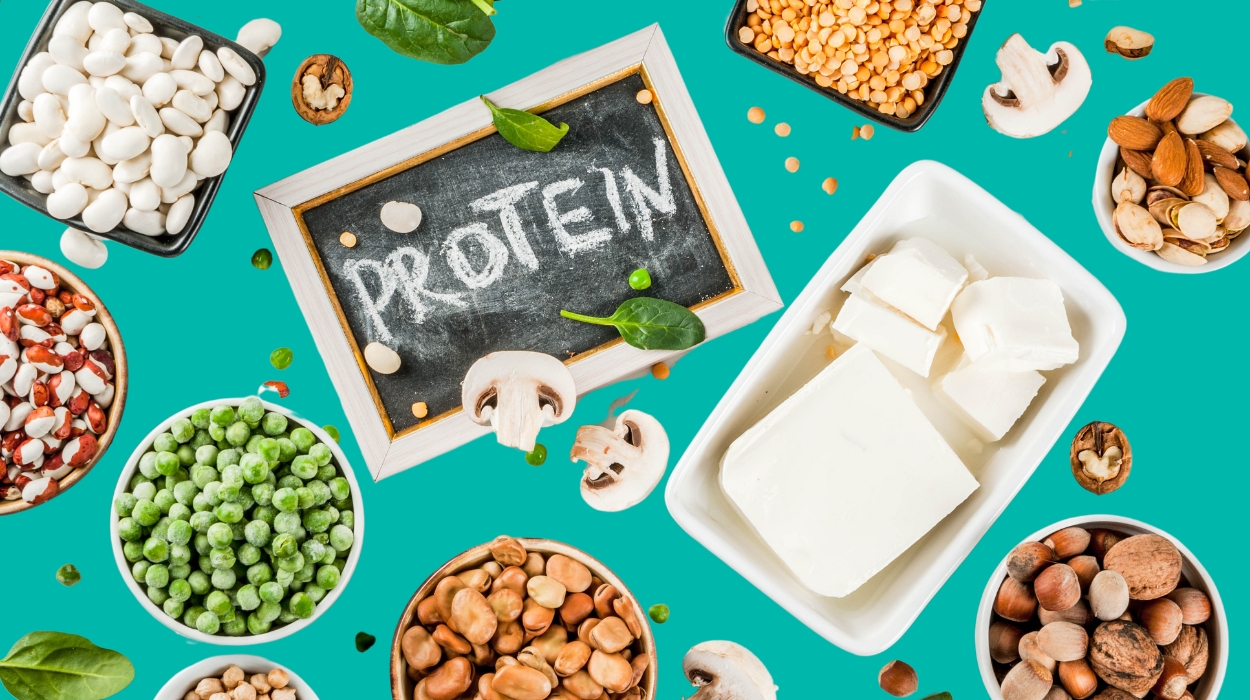 Expert's opinion
Expert's opinion
Expert's opinion
The article is a subjective view on this topic written by writers specializing in medical writing.
It may reflect on a personal journey surrounding struggles with an illness or medical condition, involve product comparisons, diet considerations, or other health-related opinions.
Although the view is entirely that of the writer, it is based on academic experiences and scientific research they have conducted; it is fact-checked by a team of degreed medical experts, and validated by sources attached to the article.
The numbers in parenthesis (1,2,3) will take you to clickable links to related scientific papers.
How To Build Strength: 2024 Best Guidelines For Muscle Growth And Strength Gains

Building muscle strength doesn’t happen overnight, but it doesn’t have to take forever as well. With just a few simple but effective tips, you can improve your strength much quicker than you think.
Fitness Routine For Major Muscle Groups
- Add supersets to your workouts
- Minimize rest time
- Decrease cardio workouts
- Eat more protein
- Stay consistent with your workouts
- Honor your rest days
Muscle Strength Training: 6 Effective Ways
Add Supersets To Your Workouts
Supersets are a combination of usually two, but sometimes even three compound exercises which are then performed back-to-back. They can, but don’t have to complement each other. Their purpose is to attack different muscle groups in the shortest amount of time, so your workout is faster and more intense, and it keeps your heart rate up.
Your superset can consist of only upper-body exercises, lower-body exercises, or a combination of both. The goal is to move quickly from one exercise to the other, so when you’re building your workout, try pairing up exercises that use the same weight or exercise tool.
Example Superset Pairings
Here’s an example of great superset pairings to help you build strength:
- Lateral Shoulder raise and Front Shoulder lifting weights
- Squats and Lunges
- Squats and Shoulder Press
- Romanian Deadlift and Upright rows
- Triceps with a pulley and Face pulls
Minimize Rest Time
If you want to fully burn out your muscles and make them grow faster, minimize the rest periods in between your sets. This will make them work harder, and the oxygen flow through the muscle fiber will be greater.
Time your rest periods and keep them under a minute in order to really feel the difference and build strength. It doesn’t matter if you’re performing upper or lower body exercises; try to shorten the time between them. This will make your workout a bit harder as your heart rate will always be higher, but the strength benefits are far greater than you think.
Decrease Cardio Workouts

When aiming to build strength, it’s essential to keep your cardio workouts to a minimum as they’re detrimental to what you’re trying to achieve. Prolonged and excessive cardiovascular exercises are catabolic, meaning they break down muscle and use it as fuel.
Too much cardio can use up your available energy stores and force your body to find another energy source than carbohydrates and fat, so lean muscle tissue is the following logical energy source.
If you’re an endurance athlete and you’re trying to build strength, reduce your weekly mileage and make sure that’s not the only type of workout you’re doing. It’s easy to fall under the spell of cardio workouts, but they’re simply not what your body needs when looking to build muscle strength.
Eat More Protein

Nutrition is just as important as exercise, if not more important.[1] The nutrients you add to your body help you repair and build those hard-working muscles, so the type of food you eat really does matter.
Protein is the most important macronutrient[2] for building strength and muscle mass. It’s the building block of every muscle fiber, and when you’re not taking enough,[3] muscles can’t properly function, recover, repair, and grow stronger.
The exact amount of protein one needs to take is not entirely set out when aiming for muscle strength. Many studies have shown that anything between 1.6 g/kg – 2.2g/kg[4] of a person’s body weight helps maximize resistance training-induced gains in muscle mass and strength.
Even though there are more factors in play (age, gender, level of activity, current muscle mass, fat storage, etc.), going way under 1.6 g/kg is bound to be counterproductive. So, when your goal is to gain strength in the least amount of time, increase your overall protein intake.
The source of protein doesn’t really matter, as long as it’s a combination of all the essential amino acids. Animal protein has all nine essential amino acids, but plant-based protein usually has to be combined. The vegetarian foods that contain all nine essential amino acids are quinoa, tempeh, amaranth, tofu, edamame, chia seeds, nutritional yeast, buckwheat, hempseed, blue-green algae (spirulina), and soybeans.
Other than that, try combining whole grains and beans or legumes, beans and legumes and nuts or seeds, or whole grains with nuts and seeds. Think hummus and pita bread, peanut butter on toast, lentils, barley, beans, and rice.
Stay Consistent With Your Workouts
No pain, no gain. The saying can’t be more accurate when it comes to building strength, especially when trying to do it as fast as possible. You can’t expect to increase your strength if your schedule only allows for one or two training sessions per week. You need to increase your workout load to at least four or five times per week and stay consistent with it.
The more often you work out on a consistent, weekly basis, the quicker your muscles will adapt, the less sore you’ll get, and the more efficient gaining strength and muscle will be. Whether you’re always working your full body or splitting your days into upper and lower body exercises, you’ll always reap the most health benefits if there are not many rest days in between.
Honor Your Rest Days
All that being said, your rest days are still extremely important. That’s when you allow your body to repair and build while lowering stress and inflammation. As much as exercising is great for your overall health and longevity, it’s also a form of stress and by not honoring your rest days, you’re putting your body in jeopardy, making it prone to injury and high inflammation.
Depending on how intense your workouts are, you might need two to three rest days per week. Spread them out nicely, and let those days help you reach your goals. You can do a complete “lift your legs in the air and Netflix and chill” type of rest day or be more active and aim for a few longer walks throughout the day.
Your body works best when it’s resting and sleeping, so give yourself the much-needed time off and enjoy getting stronger by the minute.
Conclusion
Building muscle strength should always be done in its respective time, but if for some reason you’re short on it and want to maximize gains, give these tips a go.
On a personal note, you need to eat more calories when trying to bulk up. We suggest eating at least 250 calories more than you burn to build muscle strength. And, a positive state of mind is essential as well. If you can see yourself ripped and fit, you are more likely to work towards that goal. Hold that image in your mind as you work out and strive to focus on the end prize, a new and fit you!
+ 4 sources
Health Canal avoids using tertiary references. We have strict sourcing guidelines and rely on peer-reviewed studies, academic researches from medical associations and institutions. To ensure the accuracy of articles in Health Canal, you can read more about the editorial process here
- Koehler, K. and Clemens Drenowatz (2019). Integrated Role of Nutrition and Physical Activity for Lifelong Health. Nutrients, [online] 11(7), pp.1437–1437. doi:https://doi.org/10.3390/nu11071437.
- Wolfe, R.R. (2012). The role of dietary protein in optimizing muscle mass, function and health outcomes in older individuals. British Journal of Nutrition, [online] 108(S2), pp.S88–S93. doi:https://doi.org/10.1017/s0007114512002590.
- Stokes, T., Hector, A.J., Morton, R.W., McGlory, C. and Phillips, S.M. (2018). Recent Perspectives Regarding the Role of Dietary Protein for the Promotion of Muscle Hypertrophy with Resistance Exercise Training. Nutrients, [online] 10(2), pp.180–180. doi:https://doi.org/10.3390/nu10020180.
- Schöenfeld, B.J. and Aragon, A.A. (2018). How much protein can the body use in a single meal for muscle-building? Implications for daily protein distribution. Journal of the International Society of Sports Nutrition, [online] 15(1). doi:https://doi.org/10.1186/s12970-018-0215-1.



